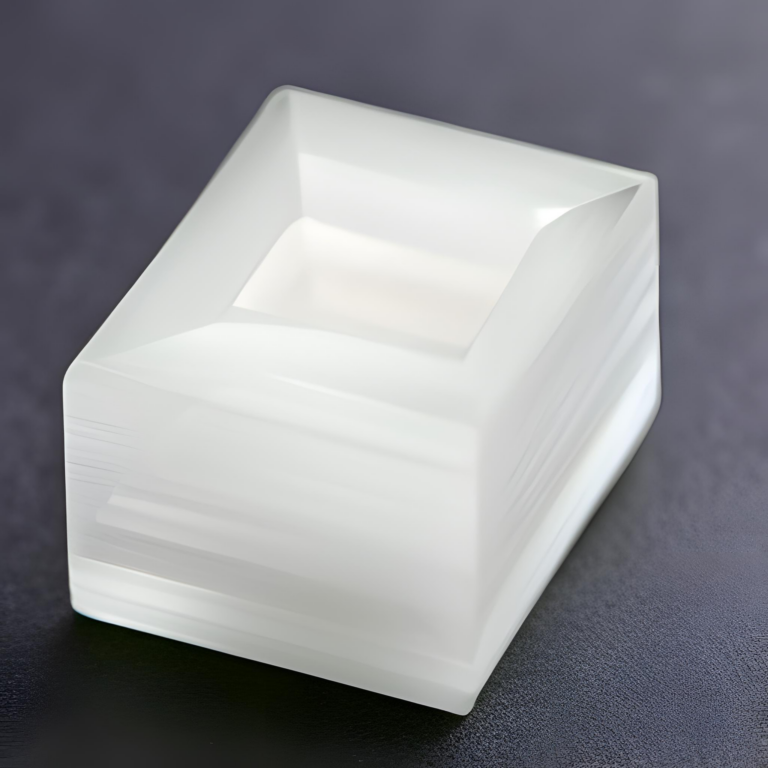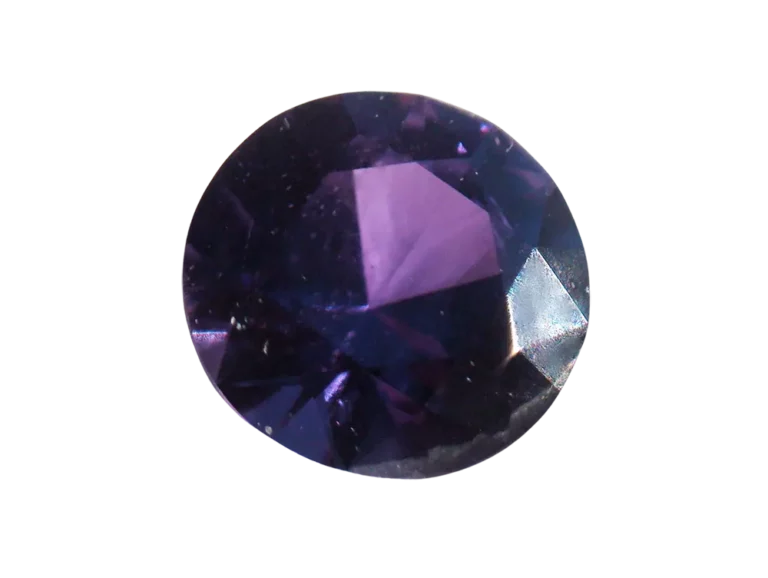Seraphinite Gemstone: Properties, Benefits & Meanings

Seraphinite Gemstone Overview
Seraphinite Gemstone is a mineral from the Chlorite group found in Siberia, Russia. This gemstone is known for its lustrous green color, feather-like patterns, and high luster. It is named after the seraphim angels due to its feather-like patterns, which resemble the wings of these divine beings.
Seraphinite gemstone is not commonly used in jewelry due to its low hardness. Instead, it is sought after by collectors for its unique qualities. Its hardness ranges from 2 to 4 on the Mohs scale, making it a delicate gemstone requiring extra care. However, its fragile nature is more than compensated by its stunning appearance and numerous benefits.
In this blog post, we will explore the properties, benefits, and meanings of Seraphinite gemstone so that you can fully appreciate the beauty and value of this precious gem.
What Is Seraphinite Gemstone?
Seraphinite is a gemstone belonging to the Chlorite group of minerals. It is found in the Lake Baikal region of Siberia, Russia, and is known for its unique green color, feather-like patterns, and high luster. Seraphinite is also sometimes referred to as Serafina.
Seraphinite is derived from the word Seraphim, which means angels of the highest order. This is due to the feather-like patterns on the stone, which are said to resemble the wings of these divine beings. Seraphinite is a relatively new gemstone, only discovered in the 19th century.
Seraphinite is a soft gemstone with a hardness ranging from 2 to 4 on the Mohs scale. This means that it is not suitable for everyday wear or use in jewelry that is likely to be exposed to wear and tear. However, it is still popular for decorative jewelry, carvings, and other ornaments.
How is Seraphinite Gemstone Formed?
Seraphinite is a type of mineral that is formed through the process of metamorphism. It is believed to have been formed from a combination of dolomite, calcite, and clays, which underwent a process of alteration due to the heat and pressure of the earth’s crust.
The specific green color of Seraphinite is believed to be caused by the presence of iron and chromium within the mineral. In addition, the feather-like patterns characteristic of Seraphinite are formed due to the mineral’s fibrous structure, which is created by the growth of the mineral under specific conditions.
Seraphinite is found in the form of small, thin sheets that are interwoven with each other to create a layered appearance. These sheets are often called “angel wings” due to their resemblance to angels’ wings.
Physical Properties
| Mineral Group | Chlorite group |
| Formula | (Mg,Fe2+)5Al(Si3Al)O10(OH)8 |
| Chemical Name: | Hydrous magnesium iron aluminum silicate |
| Color | Dark green to light green with white feather-like patterns |
| Hardness (Mohs scale) | 2 to 4 |
| Refractive Index | 1.57 – 1.58 |
| Fracture | Irregular, uneven |
| Luster | Vitreous to pearly |
| Specific Gravity | 2.56 – 2.65 |
| Transparency | Translucent to opaque |
Etymology
“Seraphinite” derives from the word “seraphim,” a term used in the Hebrew Bible to describe an angelic being of the highest order. The feather-like patterns on the stone are said to resemble the wings of these divine beings, which is why the name “Seraphinite” was chosen for this gemstone. The name is often spelled as “Serafina” in some sources, but both refer to the same gemstone.
Where is Seraphinite Gemstone Found?
Seraphinite gemstone is primarily found in the Lake Baikal region of Siberia, Russia.

Seraphinite Gemstone Appearance
Seraphinite is a unique and beautiful gemstone known for its striking appearance. It is characterized by its vivid green color, ranging from deep forest green to lighter, more vibrant green. Seraphinite also features delicate, feather-like patterns that create a striking contrast against the stone’s green background.
The feather-like patterns are caused by the mineral’s fibrous structure, which creates a unique and intricate design reminiscent of angel wings. The patterns can vary in size and shape, but they typically make a delicate, lacy appearance, unlike any other gemstone.
Seraphinite is typically cut into cabochons or beads, which showcase the stone’s unique patterns and colors. The stone’s lustrous surface gives it a beautiful shine and enhances its natural beauty.
Types of Seraphinite Gemstone
Seraphinite is a single mineral species, and there are no different types of Seraphinite gemstones. However, the appearance of Seraphinite can vary depending on the location where it is found. For example, Seraphinite from the Lake Baikal region of Siberia, Russia, is known for its deep green color and striking feather-like patterns. However, seraphinite from other locations may have a lighter green color or different ways.
In addition, Seraphinite can be found in various shapes and sizes, which can affect the appearance of the stone when it is used in jewelry or decorative objects. It is often cut into cabochons, beads, and other shapes that highlight its unique patterns and colors. While there are no different types of Seraphinite gemstones, each stone is unique and has distinct characteristics.
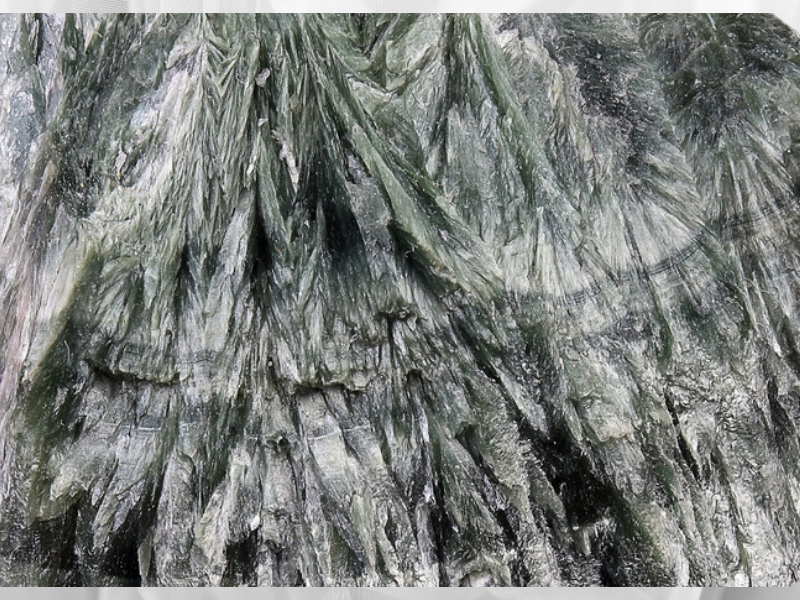
Seraphinite Gemstone Value and Price
The value and price of Seraphinite gemstones can vary depending on several factors. These include:
- Color: The most valuable Seraphinite stones are deep green with contrasting white feather-like patterns. Stones with lighter or less distinct patterns may be less valuable.
- Clarity: Seraphinite is a type of opaque gemstone, meaning that it does not allow light to pass through it. However, the stone’s surface can still have variations in texture and pattern that can affect its value.
- Cut: The cut of a Seraphinite stone can also affect its value. Stones that are well-cut and polished to enhance their natural patterns and colors are generally more valuable than stones that are poorly cut or have flaws.
- Carat weight: The size and weight of a Seraphinite stone can also affect its value. Larger stones are generally more valuable than smaller stones, all other factors being equal.
Generally, high-quality Seraphinite gemstones can command a relatively high price. However, the value of any individual stone will depend on its specific characteristics, such as color, clarity, and cut. In addition, the location where the stone is mined can also affect its value.
How Can You Tell if Seraphinite Gemstone Is Real?
To determine if a Seraphinite gemstone is real, there are a few tests that can be performed:
- Visual inspection: Real Seraphinite will have a unique and distinctive appearance, vivid green color, and delicate, feather-like patterns. It may not be real if a stone looks too uniform or lacks these characteristic features.
- Hardness test: Seraphinite is 2.5 to 3 on the Mohs scale and can be scratched easily. You can use a simple scratch test by rubbing the stone against a harder material, such as a steel blade or quartz. If the stone scratches easily, it is likely real.
- UV light test: Some gemstones fluoresce under UV light, and this can be a useful tool for identifying Seraphinite. Seraphinite will typically exhibit a weak orange-yellow fluorescence when exposed to UV light.
- Specific gravity test: The specific gravity of Seraphinite is around 2.65 to 2.75, which means it is slightly denser than water. You can perform a specific gravity test by weighing the stone in the air and then in water. If the stone sinks in water, it is likely real.
It is always best to have a gemstone evaluated by a professional gemologist who can perform more comprehensive tests to determine its authenticity.
What Does Seraphinite Gemstone Symbolize?
Seraphinite is believed to symbolize spiritual enlightenment, self-healing, and personal transformation. The name “Seraphinite” comes from the word “Seraphim,” a term used in the Bible to describe an angelic being with six wings. This association with divine beings and spiritual awakening has led to Seraphinite being known as a stone of spiritual transformation and growth.
The stone is said to help connect the physical world with the spiritual realm and promotes healing and balance in the body and mind. In addition, it is believed to activate the heart chakra, promoting feelings of love, compassion, and forgiveness. Some people also believe Seraphinite can help release negative energy and promote emotional and mental clarity.
In addition to its spiritual and healing properties, Seraphinite is also believed to symbolize prosperity and abundance. It is said to attract wealth and success and to help bring positive energy and opportunities into one’s life.
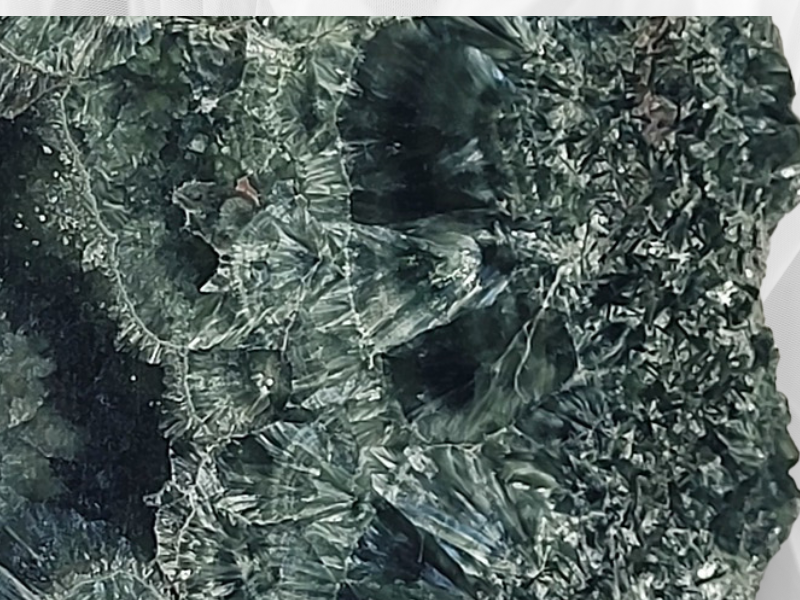
Uses of Seraphinite Gemstone
Seraphinite has a range of uses, both as a gemstone and for its spiritual and healing properties. Here are some common uses of Seraphinite:
- Jewelry: Seraphinite’s unique green color and intricate patterns make it a popular choice for jewelry. It is often used in pendants, earrings, bracelets, and other pieces of fine jewelry.
- Spiritual and healing practices: Seraphinite is believed to have many healing properties and is often used in spiritual and healing practices. It is said to promote emotional and physical healing, balance the chakras, and promote spiritual growth and transformation.
- Meditation: Due to its association with spiritual awakening and enlightenment, Seraphinite is often used during meditation. It is said to help connect the physical world with the spiritual realm and to promote feelings of calm and serenity.
- Home decor: Seraphinite is sometimes used as a decorative element. It can be displayed on a shelf or table or used as a paperweight or bookend.
- Collecting: Some people collect Seraphinite for its unique beauty and rarity. It is a relatively rare gemstone, which makes it a prized addition to any gemstone collection.
Is Seraphinite Gemstone a birthstone?
Seraphinite is not recognized as a traditional birthstone for any month. However, it is sometimes associated with the astrological sign of Sagittarius, which falls between November 22 and December 21.
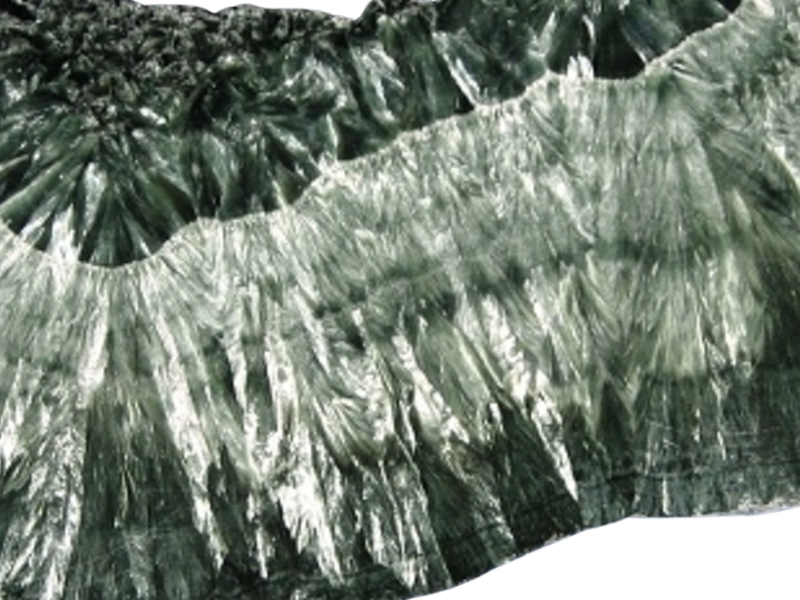
How To Take Care Of Seraphinite Gemstone Jewelry?
Seraphinite is a relatively soft gemstone with a Mohs hardness of around 2 to 4, which means it can be scratched or damaged easily. To keep your Seraphinite jewelry looking its best, here are some tips on how to take care of it:
- Avoid exposure to heat: Seraphinite is sensitive to heat and can crack or become damaged if exposed to high temperatures. Avoid exposing your jewelry to direct sunlight, hot water, or extreme temperatures.
- Keep it away from chemicals: Seraphinite can be damaged by exposure to chemicals such as hairspray and cleaning products. Remove your jewelry before applying these products, and avoid wearing it while swimming in chlorinated water.
- Store it carefully: Store your Seraphinite jewelry in a jewelry box to protect it from scratches and other damage. Avoid storing it with other jewelry that could scratch or damage it.
- Clean it gently: To clean Seraphinite jewelry, use a soft cloth or brush, mild soap, and water. Avoid chemicals or abrasive cleaners, as these can damage the stone. Rinse the jewelry thoroughly and pat it dry with a soft cloth.
Following these simple care tips, you can help keep your Seraphinite jewelry looking beautiful and in good condition for years.
FAQ
Is Seraphinite a rare gemstone?
Seraphinite is a relatively rare gemstone only found in a few locations worldwide.
Which Gemstones Go Best with Seraphinite in decorative jewelry and carvings etc.?
When it comes to pairing seraphinite with other gemstones, there are a few options that can complement its unique beauty. Amethyst can contrast nicely with the deep green colors of seraphinite. Moonstones can enhance the mystical qualities of seraphinite. Aquamarine can complement the green tones in seraphinite. Citrine can contrast nicely with the green hues of seraphinite. Finally, garnet can create a striking contrast with the green tones of seraphinite. The best gemstones to pair with seraphinite depend on personal preference and the desired effect.
Is Seraphinite a good stone for meditation?
Seraphinite is often used in meditation practices as it is said to promote spiritual awakening and emotional healing.
Does Seraphinite have any healing properties?
Seraphinite is believed to have a range of healing properties, including promoting emotional and physical healing, balancing the chakras, and promoting spiritual growth and transformation.
Is Seraphinite associated with any zodiac signs?
While Seraphinite is not recognized as a traditional birthstone for any month, it is sometimes associated with the astrological sign of Sagittarius, which falls between November 22 and December 21.


